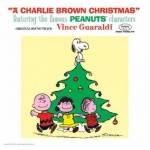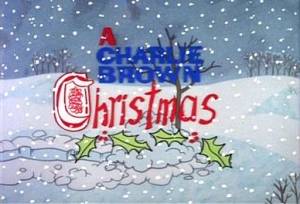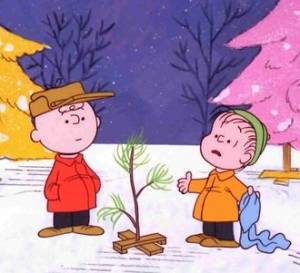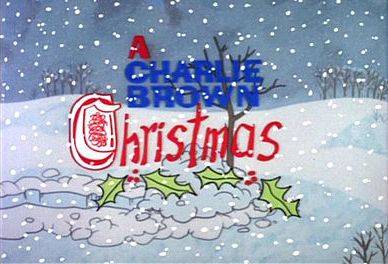My best friend has Charlie Brown’s Christmas tree, complete with Linus’ blanket, on display in his apartment window, tastefully paired with the (Italian) leg lamp from A Christmas Story. As skeptics, neither of us really go in for the holidays in a big way, but there’s something about these iconic artifacts that make them embody Q4. Remembering films we used to watch with our families during childhood — when holidays were actually a BFD – seems to smooth the edges of the rest of Christmas memories. Maybe for you it’s a ringing bell ornament, or a train with square wheels, or a Will Ferrell snowglobe that can distill all the essence of what Christmas is supposed to be into one pop-culture jolt that makes your heart grow three sizes that day. For him, and as Latrelle Bright says below, there’s just something about that poor little tree…and she’ll be bringing it to Parkland’s Harold & Jean Miner Theatre for kids of all ages to enjoy in person.
 The 30 minute play is the exact script from the television special, complete with the music by Vince Guaraldi and a meet-and-greet of the characters after the performance. Although the production seems straightforward, Ms. Bright gave me some things to think about during our conversation, below.
The 30 minute play is the exact script from the television special, complete with the music by Vince Guaraldi and a meet-and-greet of the characters after the performance. Although the production seems straightforward, Ms. Bright gave me some things to think about during our conversation, below.
SP: Parkland Theatre rarely does a play this close to the holidays, and this particular production seems different from your usual subject matter. Will you speak to what drew you to this play, and your reasons for taking it on?
 Latrelle Bright: I did what I always do when offered an artistic gig that doesn’t jazz me right away — I did some research. Charles Schulz drew from his world both external and internal and he was subtle. By his own admission he added Peppermint Patty and Marcie when he grew concerned about the strip being “slanted too much toward boys” and this was 1966. He received a letter from Harriet Glickman, a black school teacher in LA, who loved the strip but expressed concern about the absence of Black representation. His response, in 1968, was the development of an African-American character: Franklin.
Latrelle Bright: I did what I always do when offered an artistic gig that doesn’t jazz me right away — I did some research. Charles Schulz drew from his world both external and internal and he was subtle. By his own admission he added Peppermint Patty and Marcie when he grew concerned about the strip being “slanted too much toward boys” and this was 1966. He received a letter from Harriet Glickman, a black school teacher in LA, who loved the strip but expressed concern about the absence of Black representation. His response, in 1968, was the development of an African-American character: Franklin.
The kicker for me was a quote from a documentary which stated that Schulz’s “avowed theme from the start was cruelty. The way people relate to each other and the way they are at their heartfelt worst.” We can be really mean to each other. This script has elicited from one actor a great deal of guilty feelings because everything she says to Charlie Brown is so mean! I wouldn’t say he balances the cruelty with tenderness but the tenderness is there. What better (or safer) context to explore these ideas than in relationships of children.
Another thing I noticed, possibly due to the high stakes political season we are in, were the words that came out of these kids mouths. Sally says, “All I want is what I  have coming to me. All I want is my fair share.” What kid says that? A kid repeating what they’ve heard adults say.
have coming to me. All I want is my fair share.” What kid says that? A kid repeating what they’ve heard adults say.
I can’t say I was “drawn” to it and it’s not a show I would have chosen. At face value it is not edgy or political. The text is not rich or full of subtext. The characters do not surprise me. In fact, I love them all. Anyway, this little script that I didn’t think I could be bothered with really grabbed ahold of me.
SP: Regarding the costumes, I’ve…surprisingly…seen several Peanuts productions that cover the range from licensed full-body costumes, to people clothes and pretending, with various stages of makeup/ears in between. Will you divulge what we can expect from your particular Snoopy? What challenges and opportunities have been provided by the costuming choice made?
Bright: I’m not interested in putting an animated cartoon on stage. Animation and live theatre performance are two different mediums so there are no licensed full-body cartoon costumes and wigs here. Sheri Doyle has done a lovely job with costumes. It feels like 1965 and we’ve stayed as true as we could to color palette.
SP: (no seriously, until I thought about it I did not realize I have seen more than 3 plays with Snoopy in them. Weird.)
SP: This script is based on the television special, which had tones of anti-commercialism and pro-Christianity, specific to the nativity of Jesus. Can audiences expect the same elements to be present, or has there been a way to make it more inclusive?
Bright: The script is the script. I’m thinking about the use of the word inclusive: it’s a hot word right now and I’m still trying to figure out how I feel about it. I don’t think we can go around celebrating everyone’s everything to “include” all people at all times. I do wish there were more stories about various faiths permeating our American culture. In the words of Chimamanda Adichie, it’s “the danger of a single story.” If we think about the founding tenets of major religions, love is at the center. So I would encourage folks to come out and experience some love.
SP: I’d be especially interested in any thoughts about the fact that Coca-Cola originally commissioned the script, which turned out to revolve around over commercialization?
Bright: Art supported by people (even artificial ones like corporations) with lots of money is not new. I suppose we could commend Coca-Cola* for the over-commercialism message. I would be curious to know how many Coca-Cola commercials appeared each year A Charlie Brown Christmas has aired; I did not research that.
[Editor’s note: according to the official website, the special ran commercial-free with just two title slides – beginning and end – stating the production was made possible by local bottlers. *Also, while Coca-Cola paid for the script, Schulz wrote it, but good on them for not rejecting or editing out the overtones.]
SP: What have been some of your favorite moments with cast? Have you approached this production from a unique angle, or had any particular obstacles to overcome?
Bright: The cast and crew have been delightful. As for approach, there’s not a lot of time or space to be unique in a 30-minute script. One thing I’ve added are a few “random acts of kindness”…you know, those small subtle things that kids do when no one is looking.
SP: I know why I would prefer to go to a stage production over watching a television special, but what would be your main reason for people to come out?
Bright: In the words of Auntie Mame, “We need a little Christmas this year.”
SP: Is there anything else you’d like the community to know about this production?
 Bright: I’ve focused on the final words from Linus’ speech, “good will toward men” and would do a 2016 revision of the language to say, “good will towards people, animals and nature.” It’s really telling that Charlie Brown uses the word “depressed” to describe how he is feeling in the midst of the commercialism he sees around him. Snoopy’s Christmas decorations don’t lift his spirit; Sally’s long list to Santa doesn’t lift his spirit; even getting involved and directing the Christmas play doesn’t seem to do it. But the tree. The pitiful little “depressed” tree in the corner that no one wanted to buy and take home and nurture – that’s the turning point for Charlie Brown — for all of them.
Bright: I’ve focused on the final words from Linus’ speech, “good will toward men” and would do a 2016 revision of the language to say, “good will towards people, animals and nature.” It’s really telling that Charlie Brown uses the word “depressed” to describe how he is feeling in the midst of the commercialism he sees around him. Snoopy’s Christmas decorations don’t lift his spirit; Sally’s long list to Santa doesn’t lift his spirit; even getting involved and directing the Christmas play doesn’t seem to do it. But the tree. The pitiful little “depressed” tree in the corner that no one wanted to buy and take home and nurture – that’s the turning point for Charlie Brown — for all of them.
—
A Charlie Brown Christmas opens Thursday, December 1st and plays through Sunday, December 11th with tickets priced at $15 for adults, $9 for youth, discounts available. Weeknight shows are at 7:30 p.m. and weekend shows are 3 p.m. matinees, but please check the website for the full schedule and pricing details. While opening night is already sold out, you can make reservations online, or by email, or by calling the ticket office at 217-351-2528.








